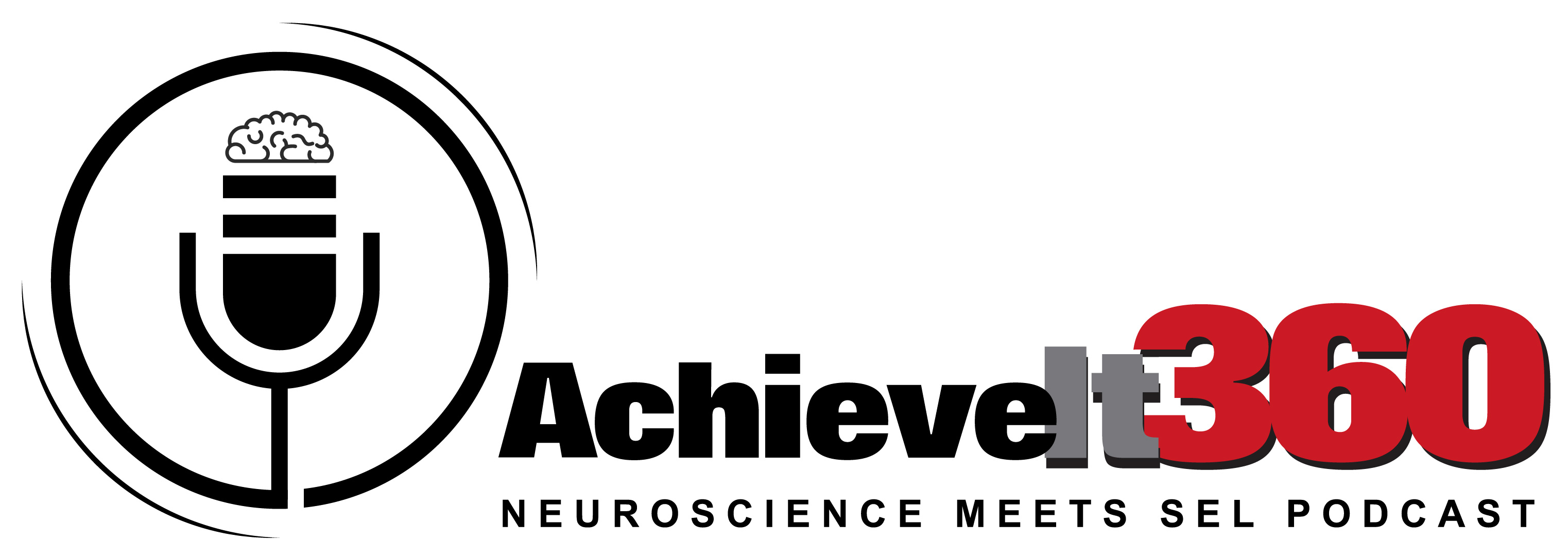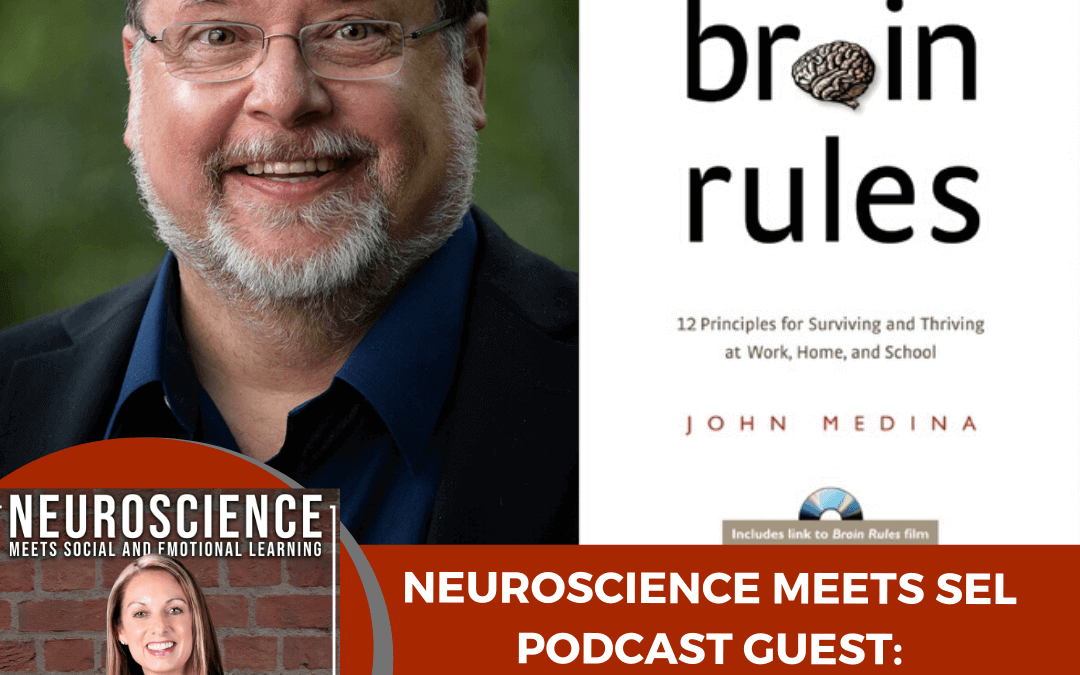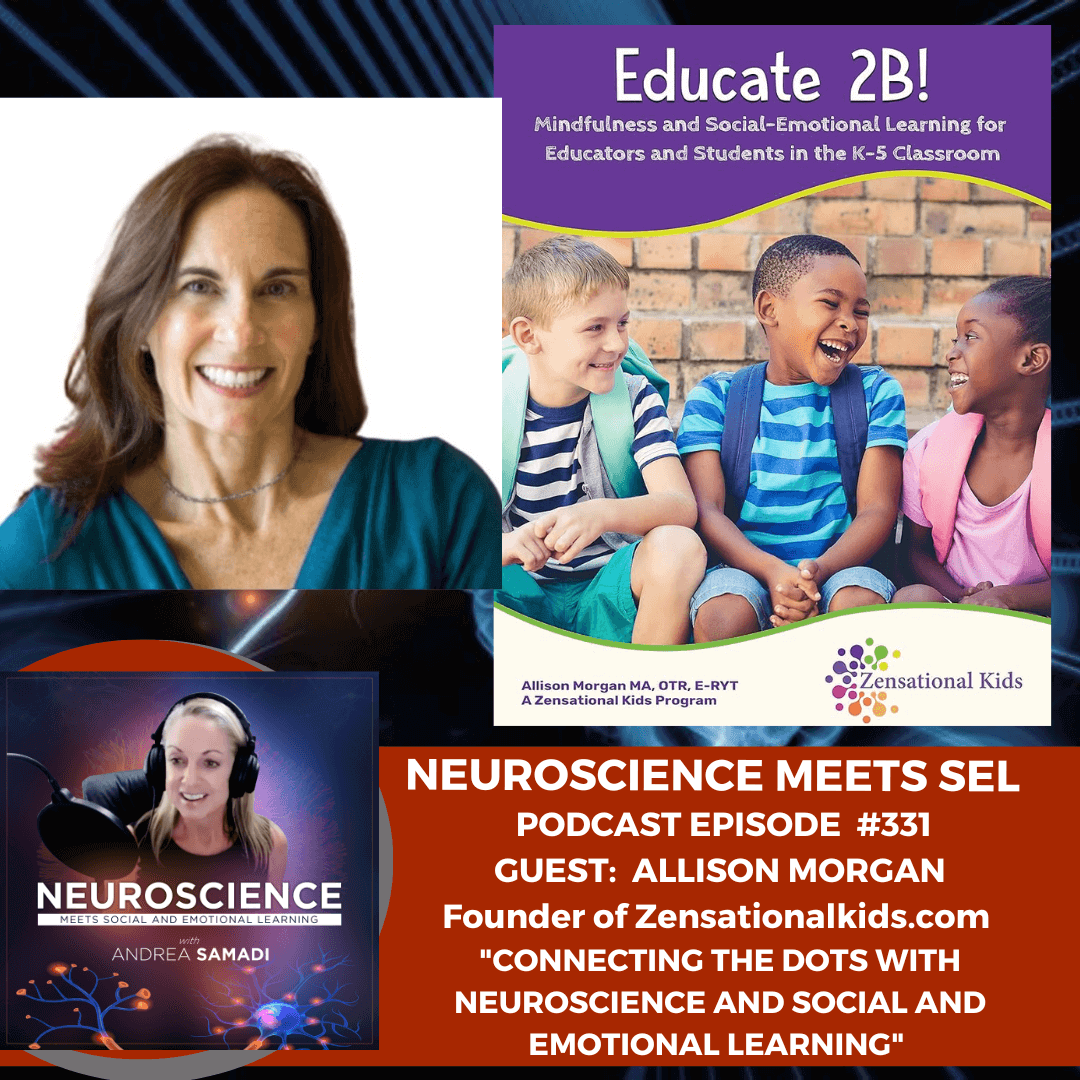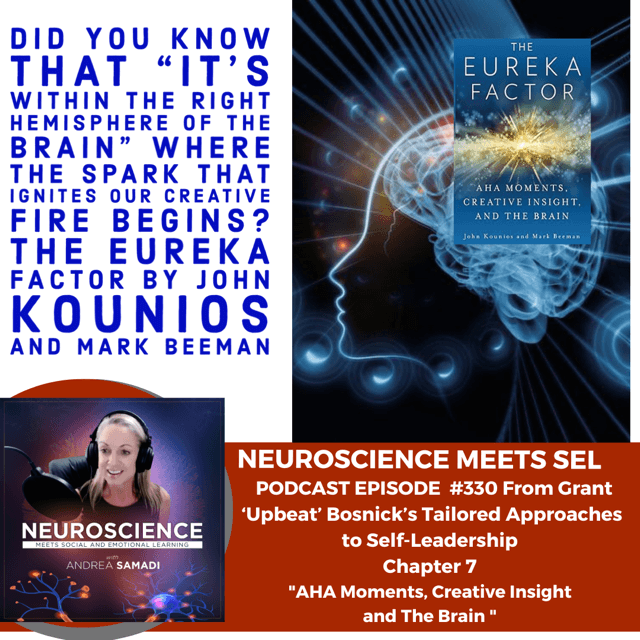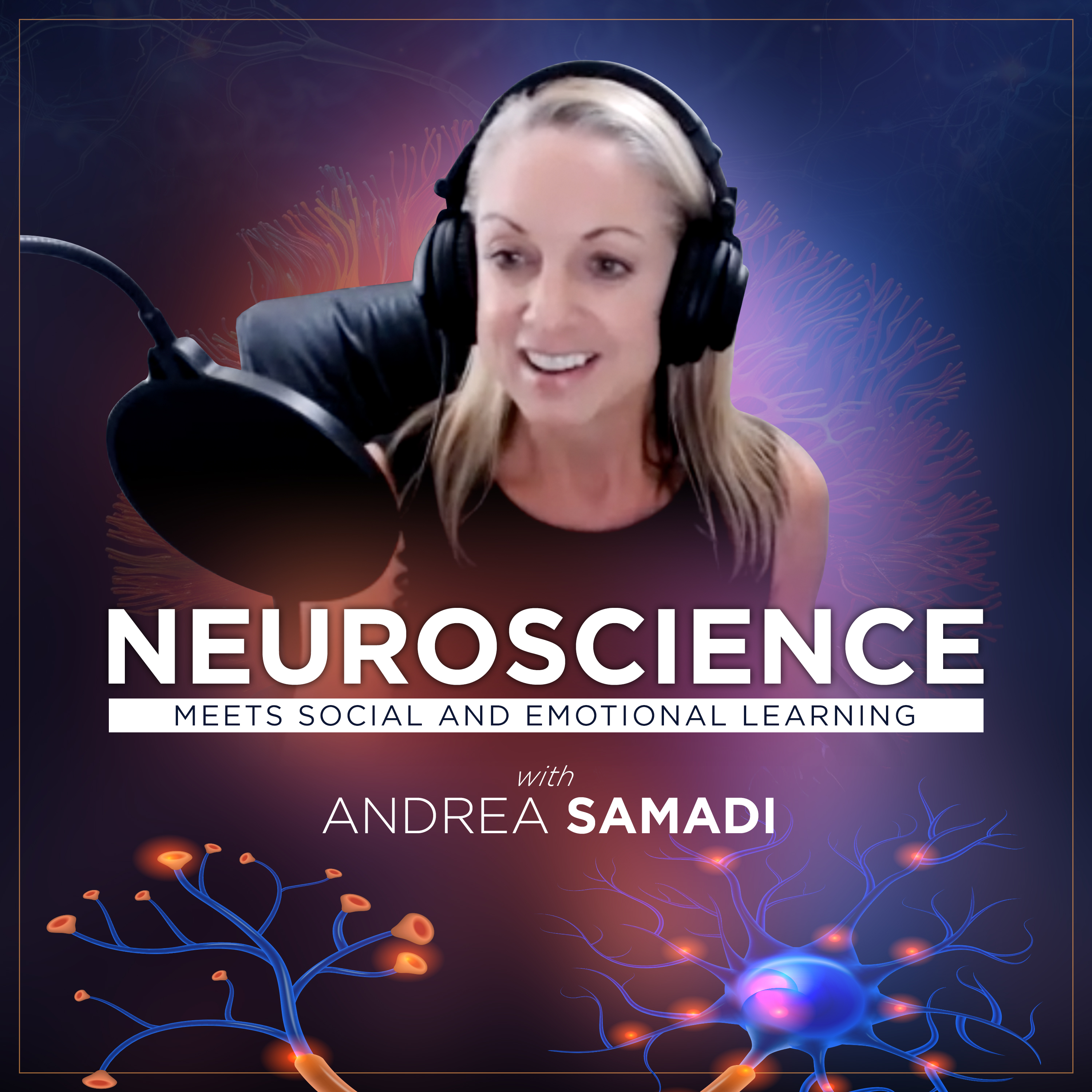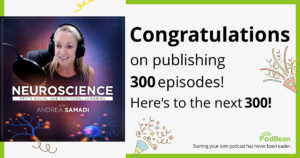This is episode #42! If you are in the field of education, our next guest doesn’t need an introduction. I want to introduce a concept that he would say is “like fairy dust to the brain”[i], and use “virtual transportation” or mental time travel to take a trip down memory lane, visualize and remember when you first heard about Dr. John Medina and his Brain Rules Series[ii] that he wrote with the idea in mind to redesign our schools and workplaces. I was given my first copy of Brain Rules when I worked as an inside sales rep, in a cubicle, for Pearson Education, (2009) by my Sales Manager, who knew I needed to read this book. At the time, I had no idea just how important these Brain Rules would be for me, however, 5 years after this, when my Character and Leadership Programs were chosen by the State of AZ for a Grant, and I was urged by an educator to incorporate brain-based learning into these programs, it was Dr. Medina’s Brain Rules that I grabbed off my bookshelf to understand how the brain impacts learning and achievement. If you have read his book, and it’s impacted you in any way, you must listen to today’s interview. You can listen to the interview here, or watch the visuals on YouTube.
Welcome to the Neuroscience Meets Social and Emotional Learning podcast, my name is Andrea Samadi, I’m a former educator whose been fascinated with understanding the science behind high performance strategies in schools, sports and the workplace for the past 20 years. Each week we bring you an expert who has risen to the top of their industry with specific strategies that you can implement immediately, whether you are a teacher or student in the classroom, or working in the corporate world, to take your results to the next level.
Welcome Dr. John Medina.
John, before we get into the questions, I’ve got to tell you that I emailed you back in 2014 to ask if I could use your book cover and your headshot in my presentations as I mentioned you as an early influencer with my work. Of course, you said yes, and I presented a slide with your book series ever since then so you would understand why I’m thrilled to speak with you today as your work has significantly impacted mine, and I can see that many others feel the same way. Thank you so much for being here today.
Question 1: Dr. Medina, I know that you wrote Brain Rules (the 2nd book in your series) to redesign classrooms and workplaces with the brain in mind. These rules are all brilliant, with so much research to validate each rule. Can you give us some concrete examples for those of us looking to implement these rules in the K-12 school or workplaces. Where have you seen your Brain Rules working really well? What exactly would a school or a workplace of the future look like to you? Of your 12 Brain Rules, which ones do you think would impact schools and our workplaces the most?
Question 2: Everyone loves this topic, which is obvious with how much interest and feedback I have had with this podcast, but there’s so much pseudoscience out there. What would be some best practices that you suggest preventing the repetition of some of the most common myths, and stay true to current evidence-based research?
Question 3: We all want the best for our children and students, (and I know that you feel the same way) and as a parent, there’s nothing I want more for my 2 girls than their happiness. With the clear fact that anxiety and depression are a nation-wide epidemic, (it is so bad where I live in Chandler, AZ that audiences gasp when I talk about the statistics of teen suicide within my local community) so I’m always looking for ways that I can be a better parent and spread the word to change these dismal statistics. What does the research say about the best ways to raise our children/students these days, to be confident, resilient and hopefully bypass anxiety and depression?
Question 4: When I was researching your work, watching your Talks at Google[iii] you mention Art Linkletter and his show “Kids Say the Darndest Things” a few times. I actually met Art Linkletter in the late 1990s and asked him to write the foreword to my first book after his speech where he told us about the day that his good friend Walt Disney took him to a place in Orange, CA full of orange trees and said “Art, look at this land…do you see what I see? I see a place where families and children will come and play, laugh and experience joy. It will be a theme park right here and it will be the happiest place on earth. Do YOU see this, and will you be my partner in business with this idea?” Art looked carefully at the land, but explained that he didn’t see Walt’s vision and declined this partnership. He also declined, politely, to writing the foreword to my book, via fax, which was ok, I did find a better match, but Dr. Medina, when you hear Art’s story, what do you think?
I’ve heard you talk about Theory of Mind as being “as close to mind reading as brain science gets.”[iv] With an understanding of Theory of Mind (ToM)[v] why couldn’t Art see his good friend Walt Disney’s vision? If they were good friends like Art mentioned, wouldn’t Art have been able to use this Theory of Mind to tap into Walt’s vision enough to change his no to a yes? Can you explain what theory of mind is, and perhaps how we could learn to develop it, so we could use it to our advantage and not have any regrets in life like Art Linkletter?
Question 5: To tie these Brain Rules all together, we have covered the ones you think would make the best schools and workplaces of the future. You have offered us some thoughts on how to be a better parent to raise resilient children that bypass anxiety and depression. Is there anything that you think we have missed that’s important that would help us all to improve our lives and results whether we are a teacher in the classroom, working in a corporate office, or even an athlete looking for an edge to improve their performance. What final advice would you give us?
Thank you so much Dr. Medina for the time you took today to share your research and books and take a deeper dive into your Brain Rules Series. For people who want to buy your books, and learn more, they can go to http://brainrules.net/ and find a ton of resources, video, references and tips to learn more. Is there anything you are working on now that you want to share?
BIO
Dr. Medina[vi], a developmental molecular biologist, has had a lifelong fascination with how the mind reacts to and organizes information. He is the author of the New York Times bestseller Brain Rules: 12 Principles for Surviving and Thriving at Work, Home, and School[vii] — a fascinating book with 12 Rules that challenge and reshape our thinking around how our schools and work environments are not currently designed with the brain in mind. Then there’s Brain Rules for Baby: How to Raise a Smart and Happy Child from Zero to Five that helps parents like me, doctors and educators to learn about brain science so we can all raise happy, smart and moral kids. His latest book in the series “Brain Rules for Aging Well: 10 Principles for Staying Vital, Happy, and Sharp” offers some ground-breaking ideas for those of us who want to stay healthy and happy as we age.
REFERENCES:
[i] How to Hack Your Brain at Any Age Dr. John Medina and Dave Asprey on Bulletproof Radio EPISODE #509 https://www.youtube.com/watch?v=VWIKtkU6H4c
[ii] http://www.brainrules.net/buy
[iii] Brain Rules for Aging Well YouTube Published January 17, 2018 https://www.youtube.com/watch?v=NujSdn1bg5k
[iv] As Close to Mind Reading as Brain Science Gets YouTube Published July 11, 2017 https://www.youtube.com/watch?v=ELOXxwyRN74
[v] Theory of Mind: Mechanisms, Methods and New Directions Published August 13, 2008 https://www.ncbi.nlm.nih.gov/pmc/articles/PMC3737477/
[vi] http://www.brainrules.net/about-the-author
[vii] http://www.brainrules.net/buy
Podcast: Play in new window | Download
Subscribe: Apple Podcasts | RSS
